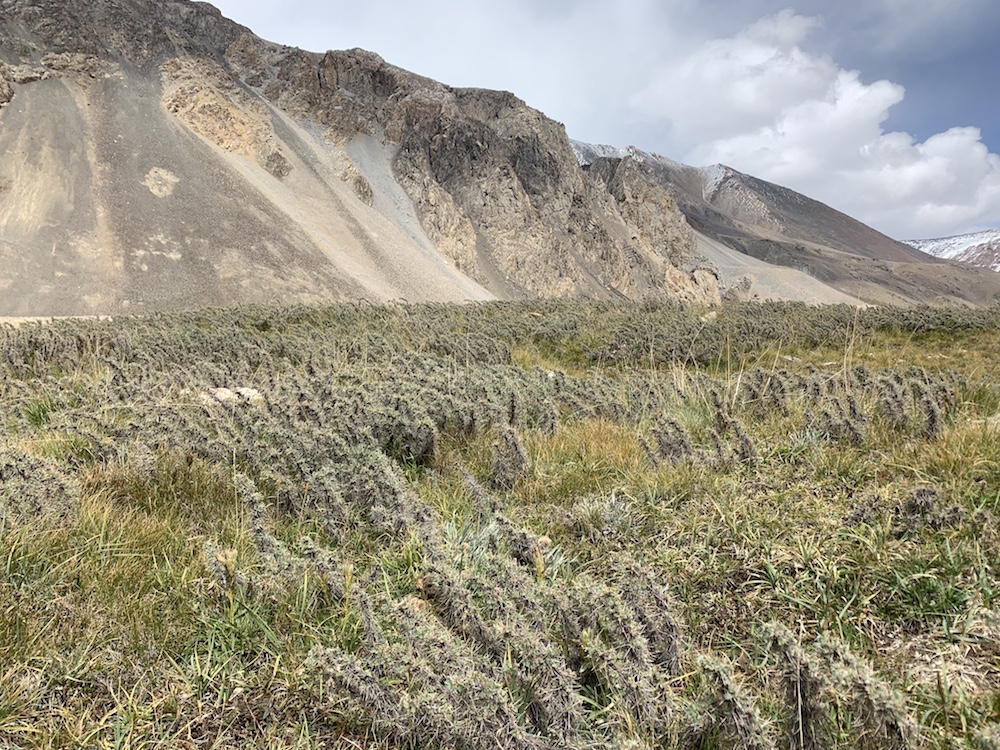From The Stans With Love
A 34-hour flight brought us 12 time zones away. We touched down in Bishkek, Kyrgyzstan, on the golden, late-summer steppe, with foothills and mountains to our left. It felt like landing outside of Boulder. Throughout our trip, we were astounded by how a place could feel so strange and yet so much like home.
From August 15 to September 3, we travelled through Kyrgyzstan and Kazakhstan on a seed collecting expedition to expand the Middle Asian steppe collections of Denver Botanic Gardens.
The framework for this trip was laid in 2018, when the Gardens signed The Tashkent Accord, an agreement between five Middle Asian countries (Kazakhstan, Kyrgyzstan, Tajikistan, Turkmenistan and Uzbekistan) and the Plant Collections Collaborative (an alliance between North American gardens to support important domestic and international collecting trips) to help facilitate exchanges of plant material, resources and education between our countries and botanical institutions.
In Kyrgyzstan we worked with Dr. Georgy Laskov of the Kyrgyz Academy of Sciences in Bishkek, Kyrgyzstan. In Kazakhstan we worked with a team of botanists led by Dr. Gulnara Sitpaeva, the General Director of the Institute of Botany and Phytointroduction in Almaty, Kazakhstan. These incredible scientists acted as our botanical and cultural guides, bringing us to and through a variety of experiences.
In both Kyrgyzstan and Kazakhstan we explored Middle Asian steppe in mountains, valleys, lakeshores, dunescapes, canyons and plains. On our first day, baking in the sun, we scaled the steep, sandy foothills of Kyrgyzstan’s Salt Valley, surrounded by grazing horses. On our second day we were in the cool, sub-alpine shrublands of Chunkurchak, bathing in the scent of wild oregano and dodging lightning storms. This geographic diversity is characteristic of steppe regions, and similar to terrain that one could find throughout Colorado and the Intermountain West. The flora of the countries was also synonymous to our own, both physiologically and taxonomically. The plant families of Asteraceae, Lamiaceae, Fabaceae, Rosaceae, Poaceae and Apiaceae were abundant. We share genera like Artemisia, Clematis, Prunus, Stipa and Allium. We even share identical species like Epilobium angustifolium, Artemisia frigida and Krascheninnikovia lanata.
While in the field, we worked side-by-side with our guides. They often collected seeds for their own collections or whole plants to turn into herbarium vouchers. We ate meals together, usually something like a ploughman’s lunch, off the tailgates of trucks or spread out on plastic bags and scarves. At markets we bought strange melons to share; cantaloupes with watermelon skin, honeydew in the guise of deeply-lobed, green pumpkins. Once, a nomadic Kazakh herder gave our group a small pouch of kurt, a salty, chalky cheese meant to be carried in your pocket. These moments became ways that we could share what we couldn’t through our disjointed language. Work and sustenance became a shared space, botanical Latin and food our common tongue.
By the end of our trip we had made 260 collections. Following USDA-APHIS guidelines, we cleaned, inventoried, packaged and shipped our seeds directly to their ports of entry to be inspected for any pests or pathogens we might have missed while cleaning.
On our last night we walked the streets of Almaty, Kazakhstan, taking pictures of the stunning, Soviet-era Brutalist architecture, analogs to our own Boettcher Memorial Center and Boettcher Memorial Tropical Conservatory. The cast concrete and heavy stonework made this faraway place feel familiar and made us consider how much a sense of place can influence our sense of home and how strangeness and familiarity can walk hand-in-hand.
This blog post was written by Denver Botanic Gardens' staff: Mike Bone, Curator of Steppe Collections and Kevin Philip Williams, Horticulturist





Add new comment